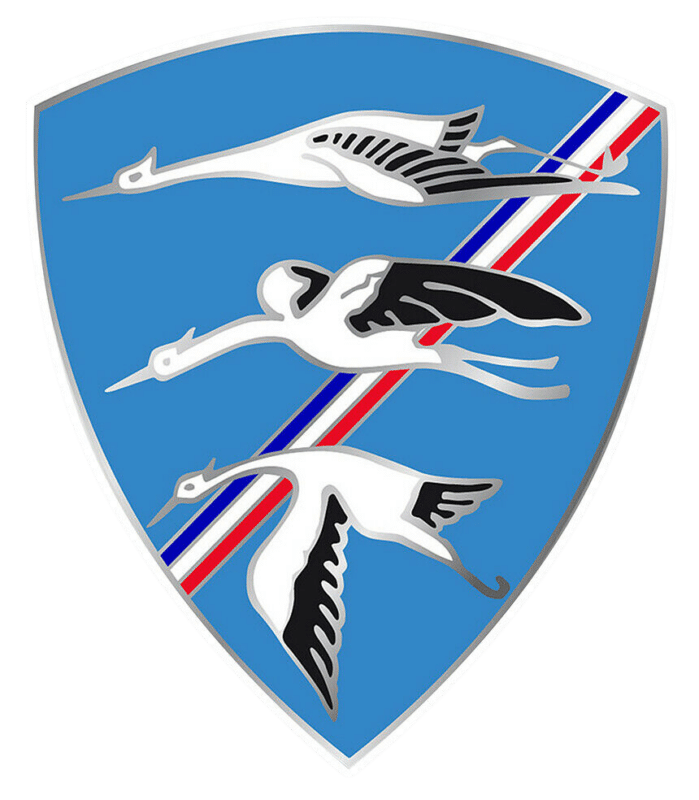Uncategorized
The Stork Hunting Group
Credit where credit is due, it was unthinkable to write the history of the most prestigious air units starting with any other than the 1/2 “Storks” Fighter Group.
First of all because of its seniority… the Group is made up of 3 squadrons whose history dates back to the beginning of the twentieth century, shortly before the “great” war… that of 14-18.
Then, because of the aces who, by writing their often tragic personal story, forged the myth of s Aces de la Chasse.
Finally, because that’s where I was assigned when a young pilot leaving school, I experienced my first emotions as a blue-eyed fighter…it’s a bit self-centered, but it’s me who writes…
The chase group 1/2 “Cigognes” was created in 1933. However, its history is older since it was in 1912 that the BL 3 squadron was created in Avord, an airfield near Bourges. At that time, the squadrons were named according to the plane with which they were mainly equipped…BL 3 because the squadron is equipped with Blériot XI 2, an evolution of the model which had made its creator famous by successfully crossing the English Channel .
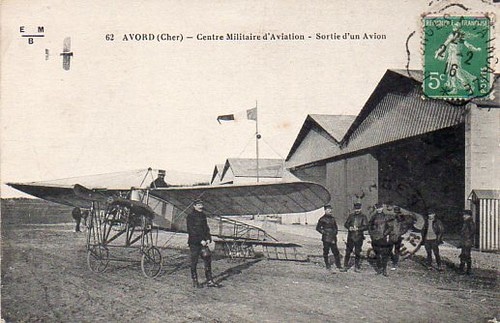
The Avord camp and a Blériot XI
Thus, it was on Blériot XI 2 that the BL 3 began the war in 1914. It is not yet a fighter unit. The Blériot XI mainly performs reconnaissance missions and “special missions” which consist of landing at the enemy, dropping off an intelligence agent or equipment and then clearing off. Vedrines is the great specialist in it… he also trained a young corporal named Guynemer in 1915 for this kind of mission.
However, it was for a completely different reason that the year 1915 marked a turning point in the history of the “Group”: the squadron indeed became the MS 3 because it now flew on Morane Saulnier type L.

The Morane Saulnier type L
It is on this plane that the squadron resolutely takes on the fighter missions under the energetic impulse of its young leader, Lieutenant Brocard. This “old-fashioned” officer transforms his unit, transcends his pilots and gets to be equipped with the “baby” Nieuport X and XI very suitable for the queen of missions…Hunting!
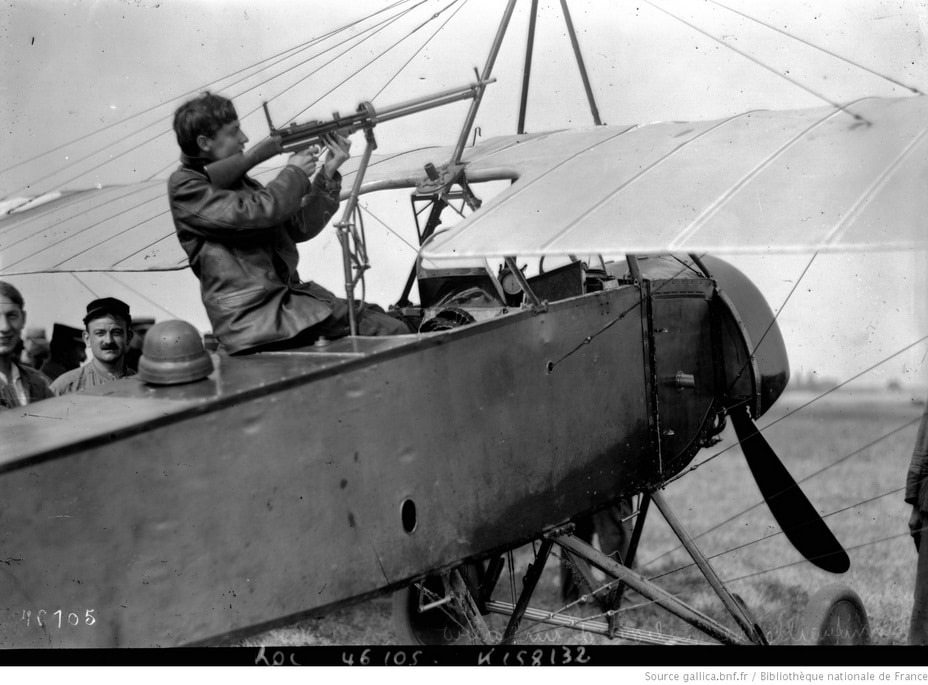
Fire control test…on MS type L
At the beginning of 1916, the Germans advanced on Verdun and held the sky. The N 3 takes a big role in reversing the situation. The Nieuport XI does wonders, the Germans are chased out of the sky…but at the cost of heavy losses.
N 3 sees its workforce reconstituted and serves as the basis for the creation of the “Somme Combat Group” soon renamed “Hunting Group 12” commanded by Brocard. The decimated squadrons N 103 and N26 as well as 3 others temporarily join the N 3… It is the first time that the pilots of N 3, 103 and 26 fly within the same unit.
It was also during this period that Brocard chose the Stork as its emblem…because of the bird’s return each spring, the legend tells us…each squadron chose a Stork which would be painted on all the aircraft in the unit. Brocard chooses the Stork “Ailes basse” which is always worn by the pilots of the squadron. N103 chooses a “high-winged” stork, also called “Fonck’s stork”, while N 26 chooses a bird with outstretched wings. The 3 squadrons will not leave each other until the end of the war and form the hard core of the Groupe de Chasse 12.
The Group covers itself with glory definitively after its passage on SPAD planes by taking on the passage the name that they will keep of SPA 3, 103 and 26… See the winners:
– The SPA 3 accumulates 175 victories and 204 probables, it leaves above all a name “Guynemer” whose soldiers of the Air Force and Space still wear mourning by wearing a black tie on their Blue uniform.

Guynemer poses in front of the “old Charles”
- The SPA 103 obtains 106 victories and 86 probables including 75 for René Fonck alone.
- The SPA 26 ends the great war with 54 victories and 76 probable.
In 1919, the 3 squadrons forming Fighter Group 12 were attached to the 2nd Fighter Squadron created a few months earlier.
Between the two wars, various trips embellish the life of the squadrons. The 2nd fighter squadron is now split into different groups, including the first, made up of SPA 3 and SPA 103, which will never leave each other. We then speak of the Hunting Group 1/2 “Storks”.
During the phoney war, the 1/2 is formed in all haste on its new planes: The Morane Saulnier (MS) 406…and stands up to the Luftwaffe by winning 28 victories…you must have read the march and diary operations of the group to understand the frustration of the pilots of the squadron during this period… anger against political decisions, orders from the General Staffs, against the CGT which sabotages the propellers in the factories, which leads to the destruction of the engines… In short , the armistice signed by Pétain leads to the dissolution of the Group…which will be reconstituted a little later on DEWOITINE 520 and whose pilots will join the Free French Air Force after their transfer to North Africa. The war ends on SPITFIRE within 329 SQUADRON alongside the “Alsace” group, the first FAFL squadron.

Spitfire of 329 SQN
Shortly after, in 46-47, the Group took part, still on Spitfires, in operations in Indochina and won the TOE War Cross (theatre of external operations).
In 1949, it is the installation for many years of the “2” in Dijon. It is the first squadron to fly on jet planes (the Vampire).
1956 saw the 2 engaged in Suez operations. She then flies on Mystère IV after a brief period on Hurricane. The pilots of the 1/2 “Cigognes” flew for some time with Stars of David painted over the French cockades from the Israeli bases!
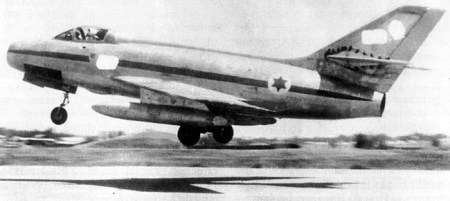
French Mystery IV with Israeli cockade and coarsely camouflaged registration
After Suez, the Cold War set in and the 1/2 discovered the joys of flight at more than twice the speed of sound thanks to the MIRAGE III, which it was the first to use in 1961.
In 1984, it is again the 1/2 which has the honor of receiving the first MIRAGE 2000C RDM. This will be changed in 1998 for the Mirage 2000-5 which still equips the 1/2 “Cigognes” today.
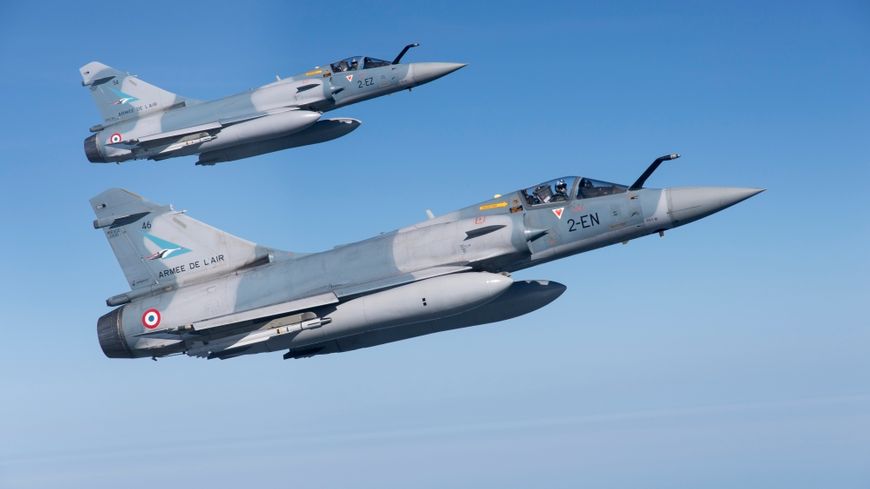
2 MIRAGE 2000-5 marauding
Air Force photo
Finally, in 2008, the SPA 26 joined the group and replaced the SPA 12, attached in a relatively ephemeral way to 1/2 in 1994.
In 2011, the group left Dijon and Burgundy for the green lands of Luxeuil les Bains…
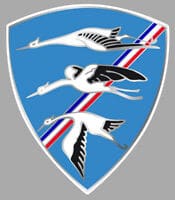
The band’s current insignia.


 Français
Français